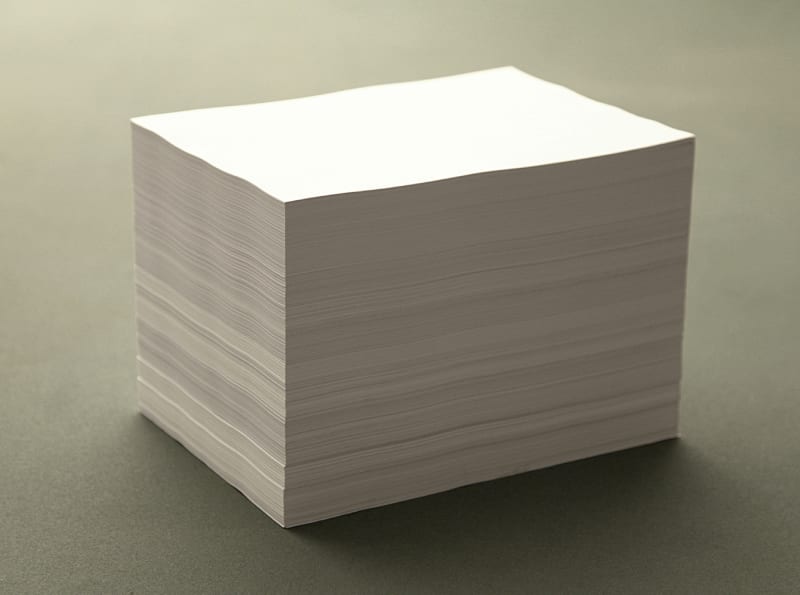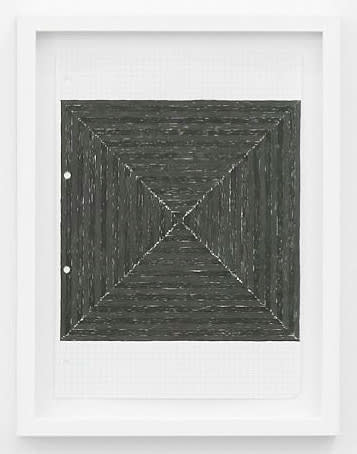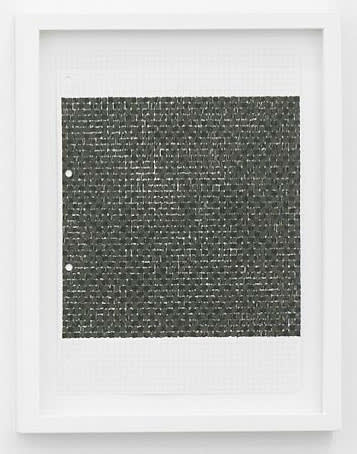IGNACIO URIARTE
Ignacio Uriarte began his professional life with a career in business administration. Understanding the probabilities offered to him by cubicle life he diverted his practice for a career in fine art. Somehow he brought the office with him. Every conceivable material or gesture one might associate with the business workplace such as biro pens, A4s, Microsoft Excel, Xerox machines and writing blocs are deftly administered like a painter using a color spectrum.
Employing the office as a total medium, complete with all its textures, materials, behaviors and structures the artist filters the data of the workstation through an aesthetic language of art history referencing moments such as minimalism, conceptual art, hard-edge abstraction, and land art. Drawing from a history of conceptual practices from the 60s and 70s, artists like Sol LeWitt, Hanne Darboven and Robert Ryman are drawn through the roller ball of a Bic pen. Behavioral aesthetics of office tedium are converted into vertiginous monochromes, color studies and haptic doodles. The artist’s approach is bilingual analogizing actions and processes legible to anyone who has worked in a cubicle or walked through the galleries of MoMA.
Everything starts with paper. A delicate growing stack of paper can be seen on the monitor. It pulsates slowly up and down. Shot in earthen tones the Judd-like box captures an unimaginable tedium by giving illustration to the drop in the bucket. Across the gallery, stretching from floor to ceiling, a line in space is formed using a swath of A4s. As a form its language reminds one of the messy desk or infinite windows open on the browser and yet the effect is an optically potent and nearly architectural understanding of space. In a new series of drawings all possible combinations of bic pen are placed in square of sequenced pairings. The sum total is pulled apart to differentiate from the spectral equation of this otherwise common soup of color. Opposite lies a poetic study in the color black. The small suite of drawings incorporates different brands of inks marketed as ‘black’ offering within their makeup the slightest tonal varieties of warm and cold now seen checkered throughout the grid. In the center of the room one of Uriarte’s most subversive gestures is found in his monochrome without ink. Giving all the labor without the product, the form rendered is purely gestural and performative. In this case at I8 it is taken further as the recessed bump is literally pressed through the architecture of the column and found mirrored in the drawing’s opposite on the other side.
In any given project Uriarte achieves a delicate balance between analog and digital, which becomes a painfully present lexicon analyzing how the machine is capable of replicating something human — such as an error — and the human something mechanical like a perfect form. Within Uriarte’s practice the parameters for any given project are predetermined by the chosen medium’s natural limitations, capabilities and use-value. These restrictions become a gift that builds a potential of trajectories for meticulous monochromes and conceptual compositions. The result is a body of work that conveys its own internal logic of beginning and end. The process and outcome of each artwork is a fait accompli as if the work already intrinsically existed within the medium and Uriarte simply had to bring it forth.











